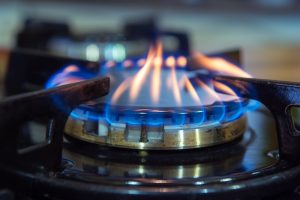 While economic and environmental concerns have driven significant electric sector improvements, climate impacts of continued reliance on natural gas for heating and cooking has gone largely unchecked. A recent decision by the Illinois Commerce Commission sends a signal that natural gas utilities will not be permitted to invest customer dollars unchecked.
While economic and environmental concerns have driven significant electric sector improvements, climate impacts of continued reliance on natural gas for heating and cooking has gone largely unchecked. A recent decision by the Illinois Commerce Commission sends a signal that natural gas utilities will not be permitted to invest customer dollars unchecked.
State public utilities commissions regulate natural gas distribution utilities and set their rates of return, one component of which is “return on equity.” These regulators thus have a tremendous influence on the long-term profitability of utilities and their investment decisions. Higher rates of return incentivize greater system buildout — the more the utility builds, the greater their profit.
But one Illinois natural gas utility was recently denied its requested return on equity in a departure from recent practice. The Illinois Commerce Commission, while approving a rate increase for suburban Chicago utility Nicor Gas, cut Nicor’s return on equity ten basis points lower than what the utility had agreed to with the Commission’s own staff witnesses. The Commission affirmed its decision today by denying Nicor’s request to reconsider the issue.
This was a tremendous victory for EDF’s close partner, Citizens Utility Board. CUB, along with others, showed that Nicor’s requested rate of return and its settlement were inflated and excessive. The ICC agreed and reduced the approved return on equity. This is an important decision signaling that the Commission takes seriously its duty to provide a return on equity only as high as reasonable given current market conditions.
Illinois PUC decision may signal changing tide for natural gas utilities Share on XDue in large part to cheaper extraction methods, low natural gas prices over the last two decades have led to steep increases in natural gas use in the U.S. While much of this use is natural gas electric power plants, over one-third of consumption in the U.S. is for heating and cooking.
A recent study found that the U.S. oil and gas industry emits 13 million metric tons of methane each year. Methane, a particularly potent greenhouse gas responsible for 25% of current global warming, is also the main component of natural gas. In Chicago, EDF’s research found about one leak for every three miles of natural gas distribution systems. Each of these thousands of small — and not so small — leaks adds up to significant greenhouse gas emissions adversely affecting the health of communities across the country.
That is one reason EDF is working on policies like beneficial electrification — transitioning to the use of clean electricity — over continued natural gas system buildout. A key component of reduced natural gas use will be addressing the current gas utility business model, which rewards utilities for increased infrastructure investments and provides little to no incentives for efficiency or decreased use.
EDF applauds CUB’s tremendous work in this case and the ICC’s thoughtful analysis. It is important that public utilities commissions around the country carefully set utilities’ rates of return. The climate impacts of continued and increasing natural gas usage are finally getting the attention they deserve. Illinois established clean energy leadership when it passed the 2016 Future Energy Jobs Act, and has committed to greenhouse gas reduction targets in line with the 2015 Paris climate accord.
Tackling this issue will require thoughtful consideration of complex regulatory issues, and utilities’ rate of return will be an important tool at our disposal as we work to deliver the benefits of decreased greenhouse gas emissions to communities in Illinois and around the country.









